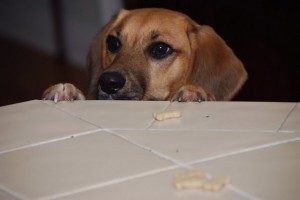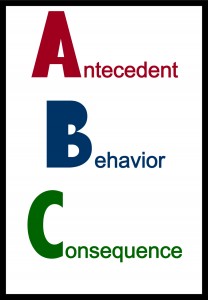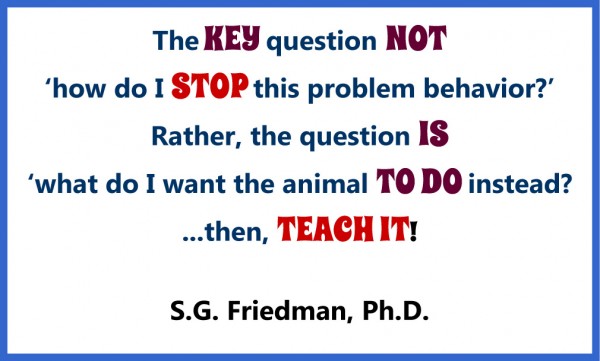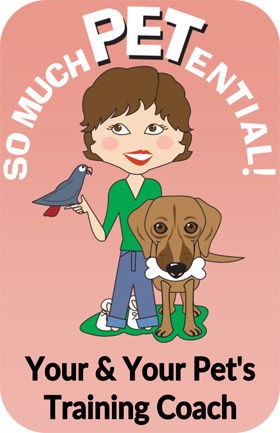pet training
Training: On Solving Pet Behavior Problems
Want A Pet Who Loves To Learn? Make Training Fun
NOTE: I have a new pet behavior blog located at http://www.SoMuchPETential.com/blog. Thanks!
I was at a friend’s house the other day who was telling me she wished her dog would come when she called. “He just wouldn’t listen,” she’d say.
I didn’t have to observe long to get a sense of at least one of the underlying explanations. I’ll paint a picture to see if you get a sense too. Her dog was outside having a perfectly good time where there is so much sensory stimulation outside – noises, smells, sights. She opened the door and called him in. He did come (this time) and the reaction he received upon coming was simply a nondescript voice saying ‘good boy Willy’.
“Hmmm,” I could visualize Willy saying to himself. “Big deal. Why should I give up my perfectly good time to come for THIS?”
I see that a lot actually. Pet owners being frustrated because their dogs won’t follow their ‘commands’ and blaming the dog. Part of the whole problem is our thinking about what we want our pet to do in terms of a ‘command’. That word alone connotes dominance and force, not a very motivating and encouraging way to learn.
I’m not going to get much into behavior analysis in this post but I do want to offer a suggestion. What if, instead of thinking about telling your dog to do a command, you think about how you can put the fun back in learning? You put the responsibility on yourself to make the behavior you want to teach, a behavior that is just super cool to do because what happens right after the behavior is so high value.
I tell people all the time how much our Sam loves to learn. The other day, in just a couple of five minute sessions, I taught him to scratch an itch on his nose. (Unfortunately Sam got adopted into a family with a very silly trainer.)
The truth is, Sam loves to learn because I’ve made it so much fun. (Well, I’m also very consistent in reinforcing the behavior I want to see but that is a separate topic for a separate column.) That time we share is really quality time together. When I’m initially teaching a behavior (usually through shaping), he loves the challenge of trying to figure out what he needs to do to get me to shout in my very animated voice, ‘GOOD BOY’, which is followed by a favorite treat. And when we are going through his repertoire of behaviors, he does each one so enthusiastically because we make it one great party.
To everyone who has a dumb or obstinate dog, I challenge you. Instead of holding your dog up to expectations, hold yourself up to creating an environment that fosters a love of learning.
ABC’s of Pet Behavior, Part Two
Note: Please visit my pet behavior blog at http://www.SoMuchPETential.com/blog.
(from my Hyde Park Living column)
Last month I explained the ABCs of behavior and we can use them as the most positive, least intrusive way of managing and modifying our pet’s behavior. This month I thought I’d show you a little how it works.
First, let me recap. Applied behavior analysis is a systematic approach to solving behavior problems by changing the environment in which the behavior occurs. It involves looking at the very specific behavior (such as a bird biting or screaming) and the related environmental context that signals and reinforces it. We ask, “What happened *immediately* prior to the behavior (antecedent) to set the whole ball rolling?“ And, “What happened *immediately* after the behavior to reinforce it (consequence)?“
I’m going to use the example of our family dog, Sam, who has an earned reputation for pawing my mom when we eat or standing with his two front paws on the table looking for a prize. For the purpose of this column, I will label that set of  observable behaviors as ‘bad table manners.’
observable behaviors as ‘bad table manners.’
The setting event for ‘bad table manners’ is our sitting around the table with food. The consequence may be any number of things…my mom trying to ignore him but sometimes hugging him, sometimes telling him he’s bad, sometimes giving him a treat. You get the picture?
Since I know under what conditions his behavior is highly predictable, I can decrease the value of that behavior with antecedent strategies. I can play rough with him just prior to our sitting down to get him tired and less motivated to have ‘bad table manners.’ I can (and always do) make him a foraging toy that he only gets before we eat and that keeps him busy for awhile. (I break up pieces of treats, and intertwine them in knotted plastic grocery bags that are then stuffed into a heavy rubber ball.)
Another thing I have done was teach him an alternative behavior (actually he knows a lot of behaviors) that, when we are sitting at the table, he knows in black & white terms that *if * he does that behavior next to me – which I chose as sitting or laying down – *then* he will get reinforced with attention and small pieces of food. (Okay, I admit I feed him some at the table but only when he is doing a behavior I taught him is acceptable.) At the same time, I have removed all positive consequences of his bad table manners (which meant when he jumps or paws, I simply turn my back and push my plate to the center of the table).
Guess which behavior he does more of now? Heck, if I were him and I REALLY wanted a taste off that plate, and knew the only sure fire way of getting a sample was to sit or lay down, I think I’d choose to sit or lay down too. And I’d do it pretty darned fast.
What is so wonderful about this is that punishment never had to be used, only empowerment. Sam has learned to succeed because I am clear cut in teaching him what I want him *to* do and because I make learning fun. Let me say that again. At every step along the way…learning is fun.
To read part one, please click here.
Do You Know The ABC’s Of Pet Behavior?
NOTE: I have a new pet behavior blog located at http://www.SoMuchPETential.com/blog. Thanks!
(past Hyde Park Living column)
Do you know your ABC’s?
Well that’s a strange question you may be saying to yourself. Isn’t this a pet behavior column?
Yep, it sure is. And the ABC’s I’m talking about are not related to spelling words. They are instead what I have been taught to help me understand why a behavior occurs so that as a pet owner and teacher, I can effectively set my animals up for success by influencing their behavior in the most positive/least intrusive way.
Let me back up. What I really would like for you to get from this column is a basic understanding that blaming an animal for doing anything you don’t want him to do is simply counterproductive. All behavior happens because it is serving a purpose for that animal. We may never know at any given time what our animal is feeling or thinking when he jumps on us or chews up a garden hose but we don’t need to know to still set our animal up to succeed. Using the ABC assessment, we can modify the animal’s environment and modify his behavior without any use of force or punishment.
The science of behavior
Applied behavior analysis is a systematic approach to solving behavior problems by changing the environment in which the behavior occurs. It involves looking at the very specific behavior (such as a bird biting or screaming) and the related environmental context that signals and reinforces it. We ask, “What happened *immediately* prior to the behavior (antecedent) to set the whole ball rolling?“ And, “What happened *immediately* after the behavior to reinforce it (consequence)?“
 There you have it…the A (antecedent), B (behavior), and C (consequence)’s.
There you have it…the A (antecedent), B (behavior), and C (consequence)’s.
All too often when our pet is doing something we disapprove of we don’t even realize that we are responsible for reinforcing the very action we don’t want to see. Or in the heat of the moment, we end up punishing our pet – which can have detrimental side effects (the subject for a future column) and serves no teaching function.
Using the ABC assessment tool allows us to consider how we can rearrange the antecedents so that the problem behavior is never set into motion to begin with – and we can set into motion an acceptable behavior instead. Then we can reinforce the heck out of the acceptable behavior. Guess which behavior you’ll see more of?
In my next column I’ll work through a specific example of using the ABC analysis in solving a pet behavior issue.
Note To Barnaby About Training With Positive Reinforcement
NOTE: I have a new pet behavior blog located at http://www.SoMuchPETential.com/blog. Thanks!
Dear Barnaby, I appreciate that you want to be my helper in training Chester to wave. But please remember, training with positive reinforcement means only rewarding the CORRECT behavior.
(by the way, Barnaby is my Timneh African Grey)















